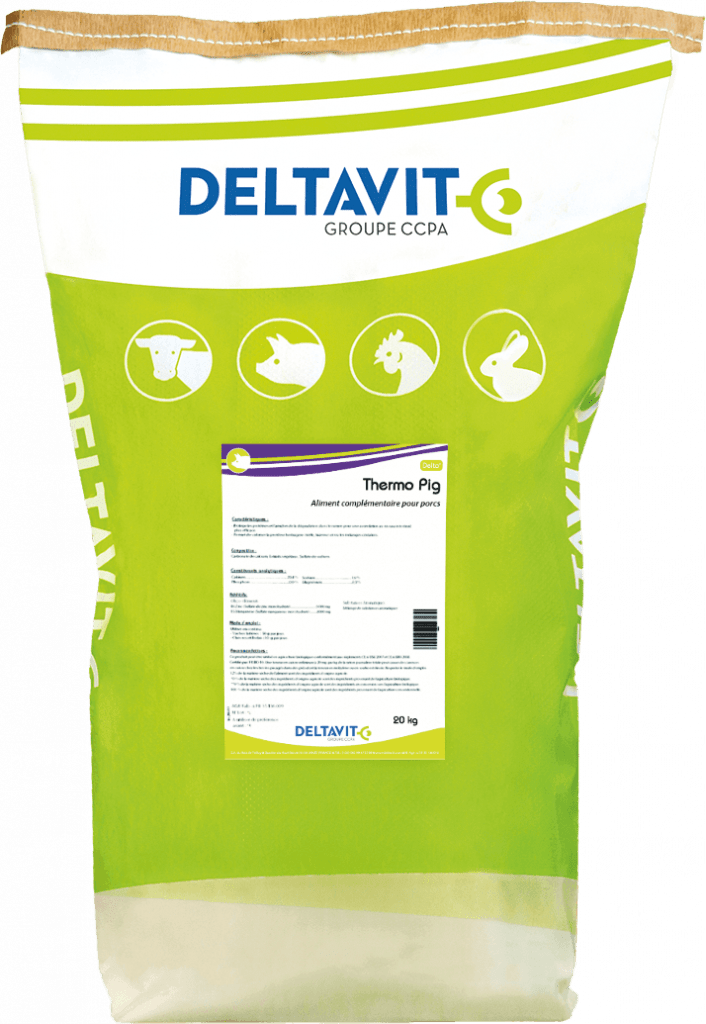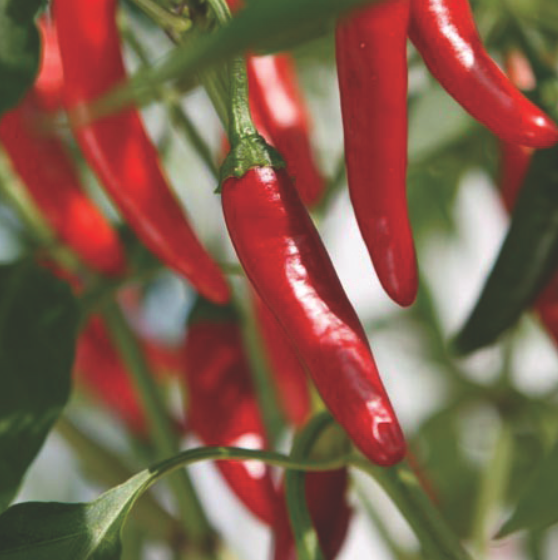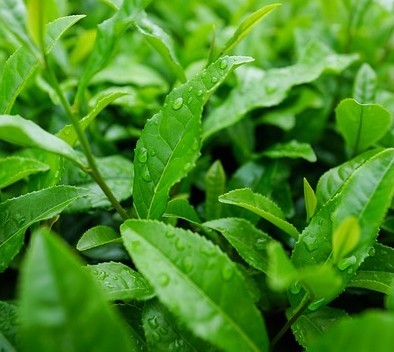
Why use Thermo®Pig?
Managing heat stress is a real economic issue in the pig sector.
Episodes of hot weather are becoming more frequent, intense and difficult to predict (Ouzeau et al., 2016). The consequences are numerous: increased mortality, lower weight and quality of carcasses, lower fertility…
How it works
To overcome the harmful effects of heat and ambient humidity in pigs, the CCPA Group has developed ThermoPig. ThermoPig acts on the consequences of heat stress. It strengthens the natural systems involved in heat dissipation, offsets bicarbonate and stimulates ingestion.
ThermoPig thus ensures animal comfort and welfare and therefore optimises milk-producing performance in sows and growth in fattening pigs.

Red chilli (Capsicum) regulates body temperature and stimulates salivation and ingestion. 
Green tea (Camellia sinensis) neutralises free radicals, especially the ones produced by heat stress.
Expert advices
Before summer arrives, remember to carry out a number of specific controls in the farm, such as checking that the ventilation and sensors are working properly, as well as the flow rate of the drinkers.
It is advisable to postpone meals during the cooler hours (early morning and late evening). It is also preferable to split meals when the distribution system allows it, to reduce heat production induced by food consumption. Finally, if a peak of intense heat is forecast, preventive rationing the day before can promote better recovery of the animals once the heat wave has passed and can also help reduce the higher rate of mortality during these periods.
The increase in water consumption as the temperature rises is greater for heavier pigs. Therefore, sufficient access to fresh water must be maintained while respecting the number of animals per distribution system, especially during the finishing period.
In a liquid feeding system, it is recommended that an additional water meal is distributed in the late afternoon (the hottest period of the day, which is also the period when the animals drink the most).
Did you know?
- Pigs hardly perspire. They cannot therefore use this mechanism to dissipate excess heat. They are therefore very sensitive to high temperatures.
- Modern genetics are particularly efficient. However, they are also more sensitive to heat stress.
- The heat stress tolerance threshold varies according to the physiological stage.
- The heavier the animals are, the more sensitive they are to excessive temperatures.
Composition and instructions
- Spices (including capsaicin)
- Antioxidants
- Buffer substance
- Betaine
- Sorbitol
Usage recommendations
- Incorporation in top feeding or in feed for sows and pigs.
- Use for a few days during the periods of strong heat.



